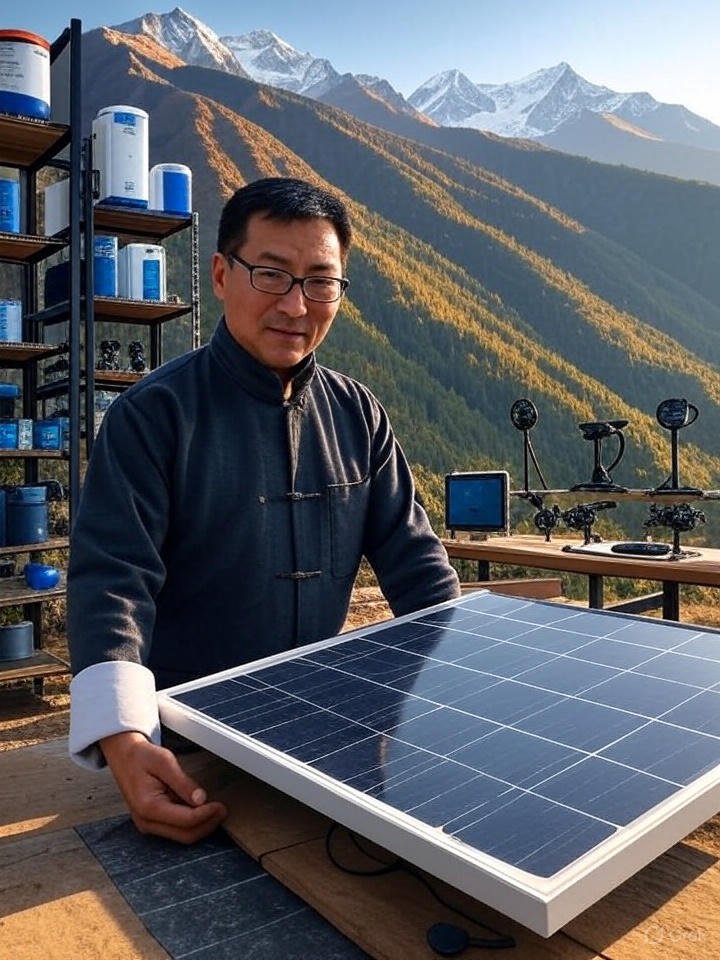The afternoon light faded to a soft glow at 4:11 PM PKT on August 9, 2025, as rain tapped against the windows of a Thimphu workshop. Inside, 26-year-old Tashi Wangchuk adjusted a small solar panel, its edges gleaming under a desk lamp. Around him, shelves held an array of devices—water purifiers, drone parts, and weather trackers—each a piece of Bhutan’s quiet gadget revolution. This Himalayan nation, steeped in tradition and guided by Gross National Happiness, is embracing technology with a purpose: to enhance daily life while guarding its natural and cultural treasures. From mountain villages to bustling towns, these tools are reshaping existence with a gentle, determined hand.
A Grounded Beginning
Bhutan’s gadget journey started with modest steps. The 1999 internet connection and 2010 mobile rollout opened doors, but the 2019 Digital Drukyul initiative set the pace, aiming to link every village by 2027. Today, 60% of households tap into this network, with gadgets like $15 solar lanterns lighting up remote homes. In Laya, herder Pema Dorji relies on one, reading to her kids each night. “No more smoky oil lamps,” she says, the device’s steady glow a small triumph. The government backs this with hydropower profits, funneling $5 million into subsidies since 2023.
Markets reflect the shift. Thimphu’s electronics stalls, once sparse, now brim with options—imports from India and Japan sit beside local crafts. A 2024 trade report logged 150 new vendors, their sales climbing to $2.5 million last year. Smartphones lead with 75% ownership, but niche tools steal attention. Tashi’s solar panel, part of a 200-unit trial in Haa, powers a radio and phone, cutting battery costs by 20%. Plans to scale to 1,000 units by 2026 hint at broader impact.
Farming with Precision
Agriculture, the lifeblood of rural Bhutan, sees gadgets at work. Soil sensors, introduced in Punakha in 2024 through a Nepal partnership, send weather data to phones. Farmer Ugyen Choden, 48, checks hers daily, tweaking water for her barley fields. “Harvest’s up 15%,” she notes, the $50 device subsidized to $30. Over 1,200 units are active, with a 5,000-unit goal by 2027. The sensors, paired with a mobile app, cut water waste 10%, per local data.
Drones add a modern touch. Druk Green Power Corporation (DGPC) uses them to scan the Sunkosh Reservoir, catching erosion since May 2025, saving $250,000 in repairs. Farmers in Bumthang borrow the tech to map crops, covering 120 hectares in an hour—a task once taking days. Mechanic Karma Tshering, 36, mends them, earning $100 monthly. “It’s like fixing a flying helper,” he laughs, tightening a wing. Rentals at $25/day make this accessible, with 50 farmers signed up.
Solar tools flourish too. The Laya microgrid, running since May 2025, powers 50 homes with 50-kilowatt units, each with a $35 solar cooker. Sonam Gyeltshen uses hers to boil tea, slashing firewood by 60%. The setup, tied to Sunkosh, reduces carbon by 25 tons yearly, aligning with the Green South Asia Initiative. Expansion to 150 homes is slated for 2027.
Urban Innovations
In Thimphu, gadgets enhance city life. The Royal University’s 200 computer labs, due by 2026, feature tablets with Bhutanese language apps. Student Dechen Tsomo, 15, taps hers to learn Dzongkha, her giggles filling the room. “It turns lessons into games,” she says. The devices, costing $120 each, come with 60 apps, built with Japan’s SoftBank after their July 2025 visit. Teachers report a 10% literacy jump in test schools.
Health gadgets step up. The 2024 telemedicine network connects 30 rural clinics to Thimphu’s hospital, using $220 portable ECGs. Patient Tashi Dorji, 63, from Paro, skips a 6-hour trip for heart checks, his readings sent via video. The system handled 5,500 cases in 2025, saving $160,000 in travel. AI trials, backed by a $2.5 million Indian grant, begin next quarter to read scans remotely.
Wearables catch on. A $45 fitness tracker, imported from India, logs steps for 6,000 users, encouraging walks in line with happiness goals. Jigme Choden, a 29-year-old hiker, tracks 12 kilometers daily near Tashichho Dzong. “It nudges me uphill,” he says, adjusting the strap. Sales hit $300,000 in 2025, with local tweaks adding altitude alerts.
Obstacles Along the Way
This gadget wave faces hurdles. Internet falters in high spots like Laya, where 45% of users lose signal despite the 2027 target. A $20 million investment, reliant on hydropower, risks delay after a 2023 drought cut output 15%. Rural skills lag—50% of Trashigang farmers shun phones, leading to workshops. Costs bite too—drones run $1,200, though rentals ease access.
Cultural pushback simmers. Monk Pema Wangchuk, 65, avoids gadgets, fearing they disrupt meditation. “Stillness heals,” he insists. Schools cap screen time at 2.5 hours daily, a nod to tradition. Infrastructure strains funds—each lab costs $22,000, with $35 million needed for the 2027 plan.
Beyond Borders
Bhutan’s gadget strides draw notice. The UN highlighted the Laya microgrid in a 2025 sustainability report, while SoftBank explores solar links. GreenTech Solutions, a Thimphu outfit, sold 250 panels in 2025, projecting $600,000 by 2027. The “Bhutan Tech Trail,” launched June 2025, drew 600 visitors, adding $60,000 to revenue, though some locals fret about crowds.
Regionally, the Thimphu Summit’s Green South Asia Initiative shares microgrid tech with Nepal. Exports grow—a pilot of 1,200 water purifiers to India earned $50,000 in July 2025, hinting at a $6 million market by 2027. Trade delays snag 25% of shipments, a challenge to tackle.
A Tomorrow Shaped by Tools
As rain eased, Tashi packed his panel, eyeing a Haa demo. The 2026 hackathon will focus on climate gadgets, while telemedicine targets 60 clinics by 2028. Bhutan’s gadget path blends care with progress—tools that lift without losing essence. For Pema Dorji, it’s simple: “These bring light to our nights.” In a land where harmony rules, technology becomes a quiet ally, carving a future from the hills’ enduring strength.



